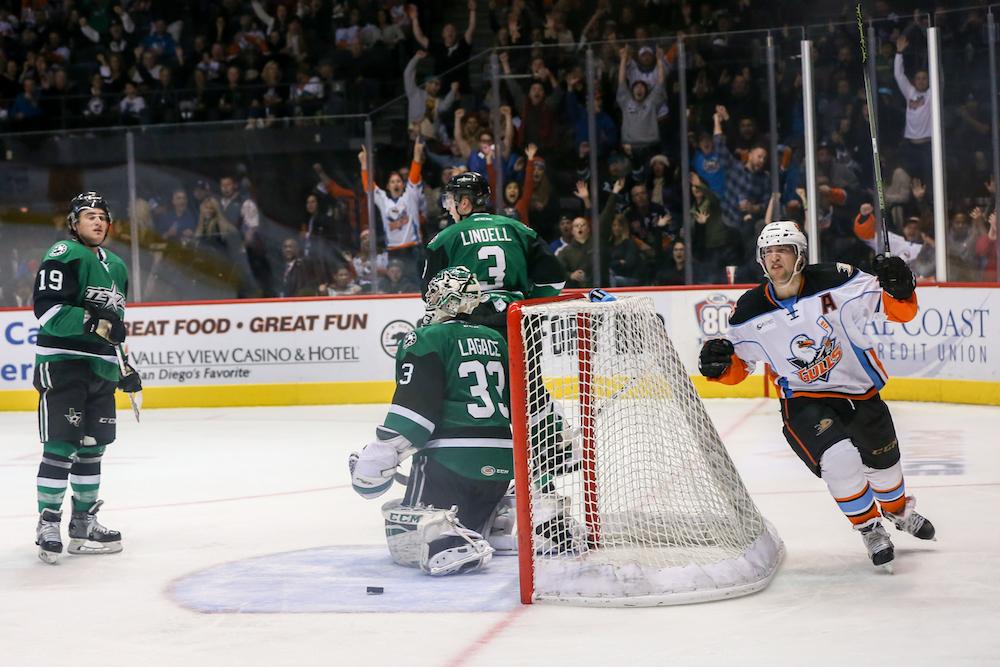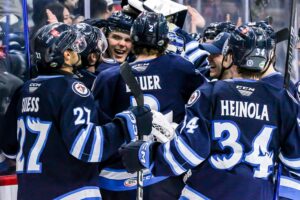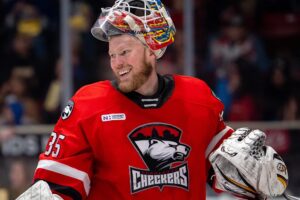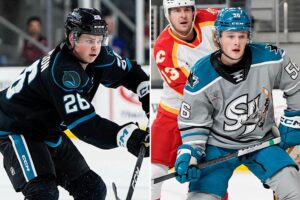By Sam Kieckhefer | AHL On The Beat Archive
The American Hockey League is considered to be the top development league for the National Hockey League, with the vast majority of players in the AHL having been chosen in the NHL Entry Draft and signed to an NHL contract.
Despite the two leagues being separate, “it’s all one big organization,” said San Diego Gulls general manager Bob Ferguson. “We’re the other part of their roster. We’re their fifth and sixth lines; we’re their eighth, ninth and 10th defensemen; we’re their third and fourth goaltenders.
“Our role is to make sure these players are developing so they can step in the NHL lineup, but also so they can step in and help them win in the NHL.”
With player development being a top priority, the AHL and the Professional Hockey Players’ Association have the following development rule in place: Of the 18 skaters (not counting two goaltenders) that teams may dress for a game, at least 13 must be qualified as “development players.” Of those 13, 12 must have played in 260 or fewer professional games (including AHL, NHL and European elite leagues), and one must have played in 320 or fewer professional games. All calculations for development status are based on regular-season totals as of the start of the season.
Just this past season the AHL moved five teams to California, creating a new Pacific Division, with the primary purpose of enhancing player development through the proximity of NHL teams and their prospects.
The Anaheim Ducks organization has a number of top prospects who are currently in San Diego and others who spent time in San Diego before moving up to Anaheim. From first round draft picks Shea Theodore (2013 NHL Entry Draft; 26th overall) and Nick Ritchie (2014 NHL Entry Draft; 10th overall) to goalie John Gibson, one of the league’s most highly touted netminders.
So with a strong emphasis on player development, and a new system to support it, what is the role of a veteran player?
On October 10, 2015, San Diego began its inaugural AHL season with a roster of 24, seven of whom played more than 260 professional games, forcing one to sit. Besides acting as depth players for the NHL team in Anaheim, veterans become leaders on the team and in the dressing room.
Guys like Gulls Captain Joe Piskula, center Chris Mueller and winger Harry Zolnierczyk have played at the NHL level, put in their fair share of time in the AHL, and are beginning to adopt a new role with the team. “It’s really to be a second tier coach behind Dallas,” said Chris Mueller. “[Someone for] the guys to look up to, see what it takes to get there and hopefully stay there, and have long careers.”
All three of the aforementioned Gulls have been called up to Anaheim this season, with only Zolnierczyk drawing into the lineup, but every player on the roster would welcome the opportunity to get his chance.
“If my number does get called, that’s great. If not, I’ll encourage the guys going up and know that I’ll always have an important role down here in San Diego.
“[My job is] to show [the Ducks’] young prospects how to become a pro. It is hard for a 19/20 year old to leave juniors, to leave college, where there’s not a whole lot of responsibility; to all of a sudden this is your job, this is your livelihood, and if you don’t take it seriously, there are always new guys coming up and it could be gone in a flash,” added Mueller. “It’s our job to make sure they do understand and know the process of what it is to be a professional.”
While the primary purpose of the league, and a key focus of the team, is to develop young players into future NHL stars, it turns out that these veteran players have an invaluable role. Teams must find a balance of top tier prospects, developing young players and professional hockey veterans. “The teams that figure it out are the teams that have success,” said Mueller.






































